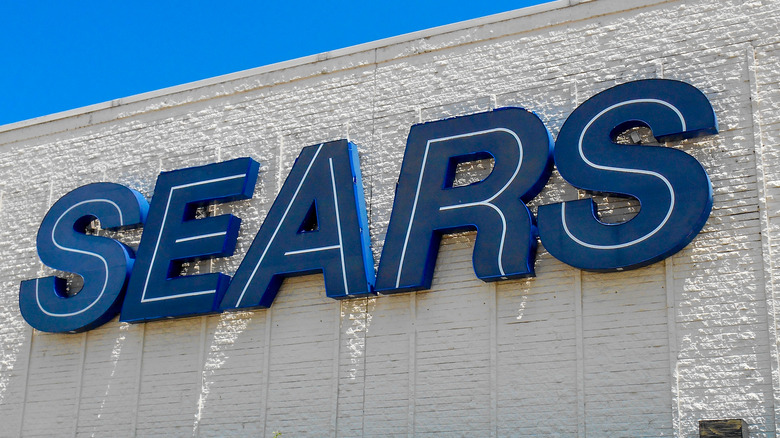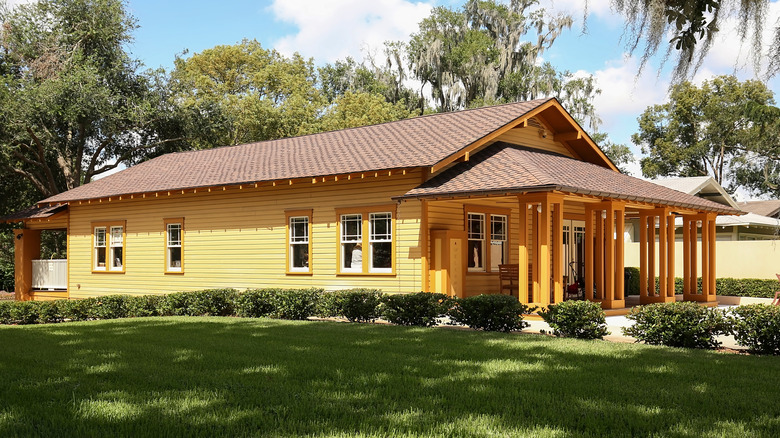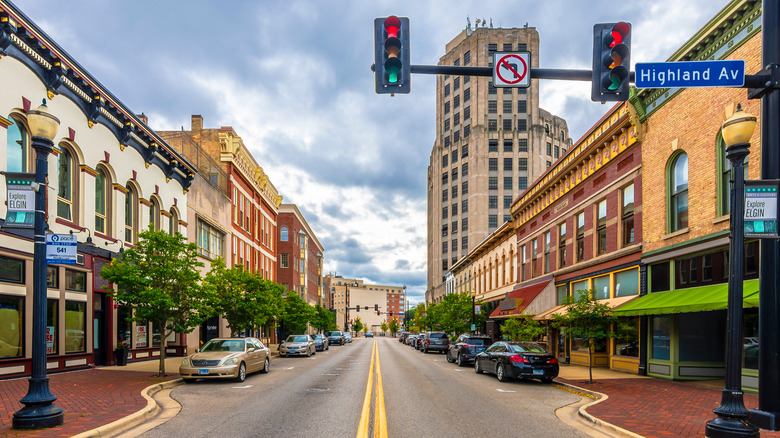The Truth About DIY Sears Kit Homes
In the early 20th century, Sears sold up to 75,000 mail-order homes (per NPR). In 1888, the Chicago-based company launched their first catalog. According to The Craftsman Blog, a variety of goods could be bought and delivered to the customer's front door. In 1908, however, the company decided to push the envelope; Sears was now going to sell and deliver houses via their Sears Modern Homes Catalog. Forbes writes that by using this catalog, a consumer could pick anything from a modest cottage to a large five-bedroom house. In any case, all the buyer needed to do was send a check and wait.
As Curbed explains, Sears would send a kit by train, with all the pieces needed to build the house, shipped throughout the U.S. They even provided instructions that insisted that any individual with even basic skills could build their house in 90 days or less. If the owner preferred to contract a builder, Sears issued a good estimate on the cost. Although Sears themselves admitted that selling homes through their catalog was not groundbreaking (another company had already come up with the idea), they did pride themselves with the fact that they supplied people with their dream home for less.
Why Sears decided to sell and deliver home kits
Curbed writes that in 1906, the Sears building materials department was facing a rough patch. Per The Craftsman Blog, the company had excess inventory that was unused and wasting away. That's when former manager Frank W. Kushel got a brilliant idea: Why not create home kits and sell them? His brainstorm paid off. Popular Mechanics reports that Sears ultimately designed over 447 different homes for customers to choose from. They came in a variety of different sizes and price points. Another advantage? Customers tended to furnish their Sears homes with items sold from other Sears catalogs (via NPR).
Most importantly, as Forbes explains, anyone could buy one. In 1911, Sears began offering financing. Their application did not ask the buyer's gender, ethnicity, or about their financial situation. This, of course, appealed to the masses, including World War I veterans and the growing middle class. In addition, Sears was very accommodating to their customers. If the customer wanted to change something or send their own blueprint, they could. According to Sears, the homes provided modern technology that was new for the time, including heating, electricity and plumbing.
All that changed in 1940. That's when Sears stopped making their famed homes.
The end of Sears kit homes
Despite the kit homes' affordability and success, The Craftsman Blog writes, Sears had to cease production of their homes because of World War II. Simply put, the materials needed to build the houses were now going to be allocated elsewhere. Forbes reports that by this point, financing was no longer available, due to the Great Depression. Nonetheless, the kit homes became cultural icons and their charm endures to this day. One homeowner told The Philadelphia Inquirer in 2021 that she loves "The glass doorknobs, the high ceilings, the materials, and the integrity of the house."
According to Popular Mechanics, most Sears homes can now be found in the Midwest and Northeast. The city of Elgin, Illinois (seen above) has over 200 Sears homes, more than any other area. As the company failed to keep thorough records, the location of all their homes is unknown. However, they are now coveted real estate and some (per The Wall Street Journal, reporting in 2017) have sold for $1 million. There are ways to identify if a house is a Sears kit home. Telltale clues include stamped lumber and public records.


